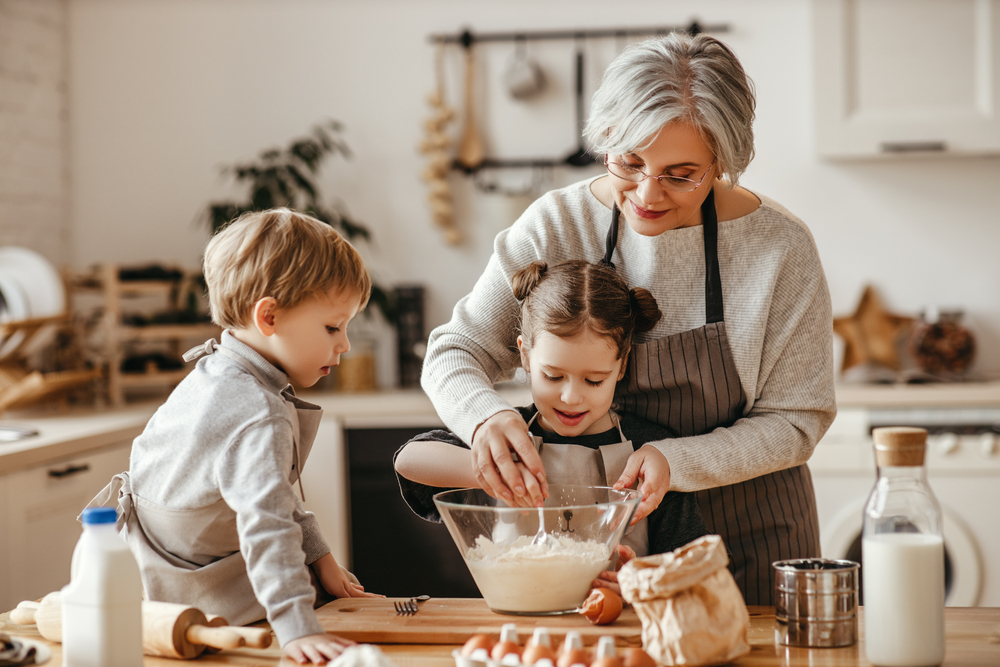My mother grew up on the Channel Islands of Jersey. She spent her childhood running on the sand between waves, building sand castles, and learning to ride bikes down narrow, hedge-lined lanes. Her family has been there since the 15th century, and the traditions—and the food—run deep.
The way my mother let me into her childhood was through food. I grew up learning about bean crock and the market stand on her way home from school that sold the freshest vegetables. I heard about Sunday roasts, Saturday morning bacon, and sausage fry-ups for breakfast. Mostly, however, I heard about my great granny’s apple pie.
My great-grandmother was a force of nature. She married several times, drove a mini cooper, and hid her money under the mattress because she didn’t trust the bank. Even at a few weeks shy of 100 years old, she still liked to get regular manicures and enjoyed a good cup of tea. She made her apple pie almost weekly for my mom growing up.
In college, I decided that I wanted to make my great granny’s apple pie. My mom had a loose idea of what the pie was like—thickly sliced apples, a sweet pastry crust—but everything her grandmother had ever told her was in vague measurements. A sprinkling of sugar and enough flour and enough butter mix until a pastry crust forms. Not surprisingly, my pies never tasted quite as good as my great granny’s.
Preserving a family recipe is like preserving a moment in history. Food is so evocative, so integrated with our memories and our sense of identity. Recipe preservation is important to so many of us because it recreates a moment in time for us. I can’t bring back my mother’s childhood, but if I could just get that recipe right, I might be able to let her linger there again for a few minutes.
Capturing Memories
However, this is often easier said than done.
Lisa Lotts, recipe developer and owner of cooking website Garlic and Zest, went to great lengths to preserve her own family recipes. Her family immigrated to the United States from the West Indies. Family recipes were, in her words, “always of the ‘little bit of this and that’ variety,” making it difficult to nail down the exact measurements for a recipe.
“One beloved recipe was for a salt cod fritter, also known as accras de morue,” Lotts said. “I tried to make it several times, but the fritters never came out like my grandfather’s recipe, and I was getting very frustrated.”
Lotts went to her grandfather and asked if they could make a batch together.
“He told me he used a teaspoon of baking powder for the leavener,” she said. “Then I watched him take a regular soup spoon—you know, the big one—from his kitchen drawer and scoop it into the batter.”
When measured, the scoop turned out to be 2 1/2 tablespoons. Lotts said this was an “aha” moment for her.
“I realized that his cooking was purely instinctual,” she said.
The weakest ink, it turns out, is in fact better than the strongest memory, which is why many people who value recipe preservation view their written-down recipes as family heirlooms.
The best gift that Susan Glynn, a mother of three from Central Pennsylvania, has ever received is one that her oldest daughter made for her after her mother passed.
“She took six of my favorite childhood recipes—including my mom’s lemon meringue pie, her beef bourguignon, and her chocolate cake—and put them in a beautiful frame. Every morning when I’m standing at the kitchen sink I see my mom’s handwriting on these recipe cards. They bring back some of my fondest memories of my mom.”
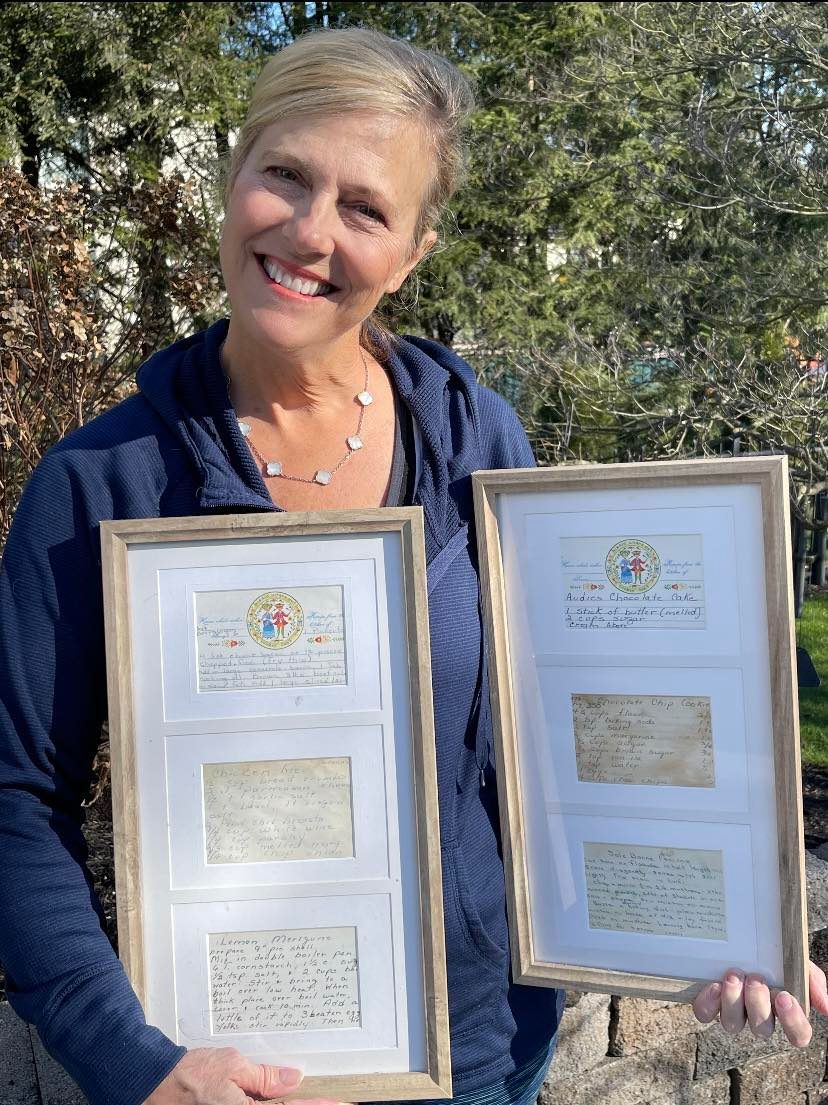
There are a lot of creative options for preserving family recipes if you’re lucky enough to have them written down. Jayna Grassel of Toronto had her grandmother’s recipe for halupki, a Ukrainian stuffed cabbage dish, etched onto a cutting board. Andrea Zimmerman of Charlottesville, Virginia, turned some of her grandmother’s recipes, in her handwriting, into tea towels for family members.
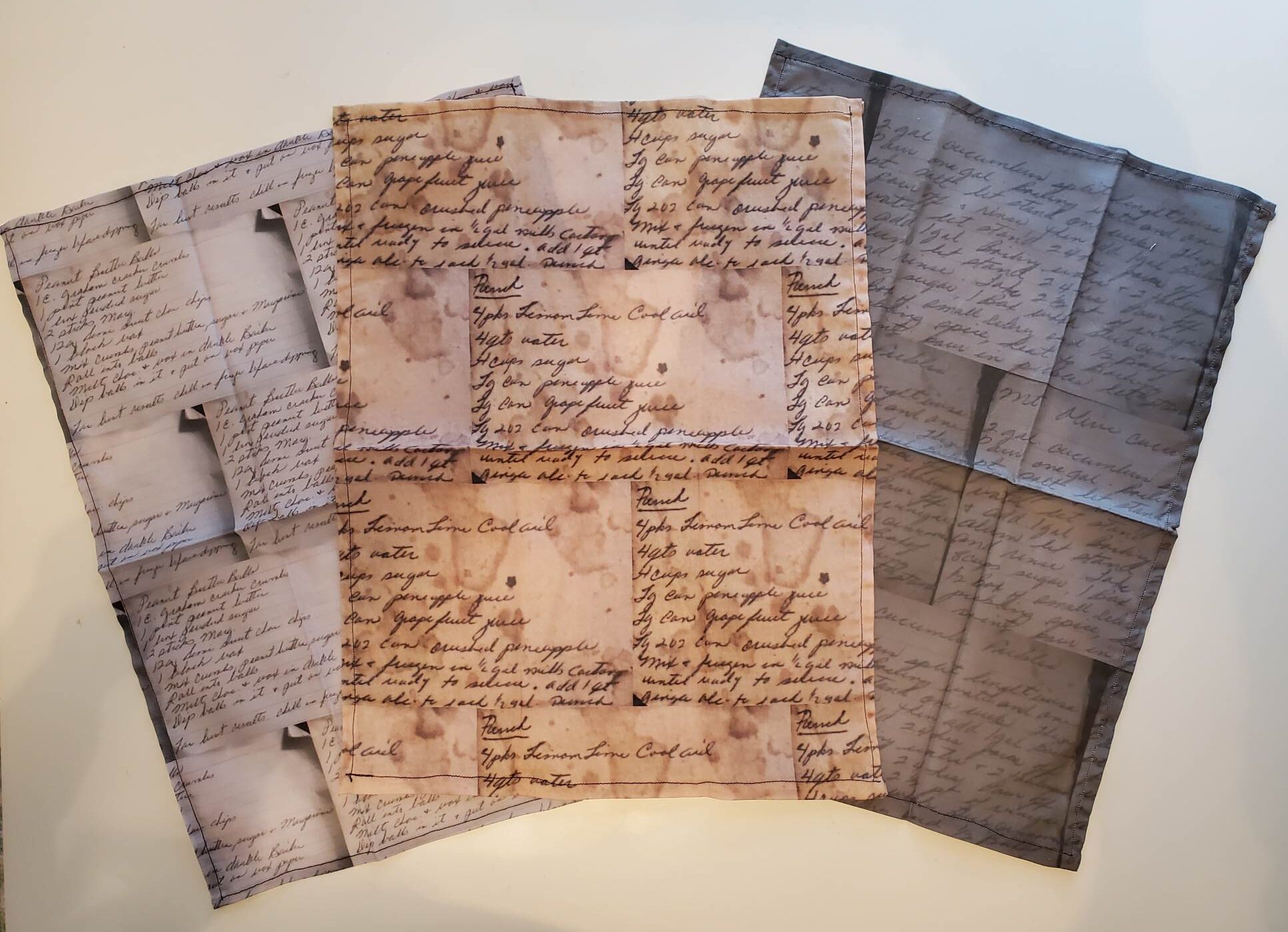
Jordan Sherman, a Florida native, decided to sit down with her great-grandmother before she passed and write down her well-known recipes.
“Recipe may be a stretch,” Sherman said. “I have a lot of ‘until it feels or looks right’ directions.”
One of the recipes was a red velvet cake with buttercream icing.
“My great-grandmother passed before I got married, and my mom made our wedding cake using her recipe,” Sherman said.
Courtney Joy Hooley of Grove City, Pennsylvania, uses her family recipes, compiled into a DIY cookbook by her mother, to pass family stories on to her own children.
“My mom gathered our family recipes when I was in high school. I use several regularly, including my grandmother’s biscuit recipe,” Hooley said. “I love that it gives me the chance to talk about the women behind the recipes with my children as we bake together—women they will never meet. I smile every time I see little hands sneaking bits of dough like I once did.”
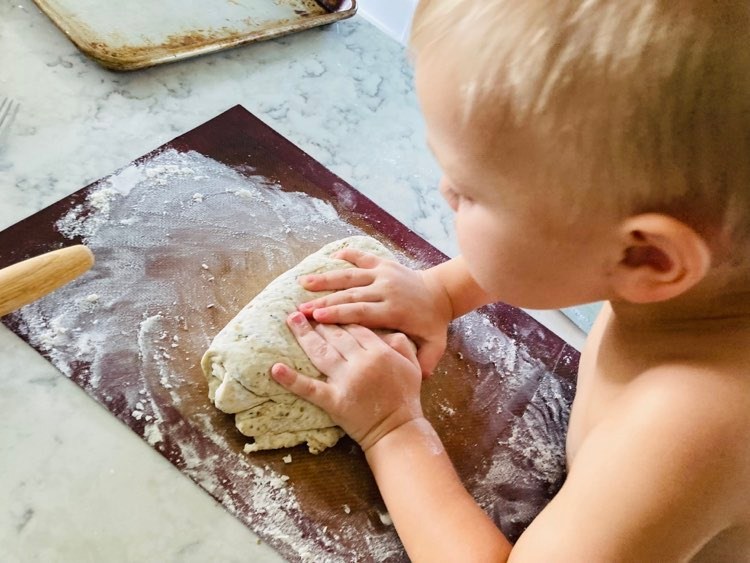
The internet is also becoming a place to collect and preserve recipes. Joshua Beck of Mechanicsburg, Pennsylvania, has been investigating building his own website and hosting a recipe database.
“For the techie in people’s families, it would be quick and painless,” he said.
When we can preserve and recreate a beloved food the way we remember it, we preserve a piece of our past and a heritage for our children. Because we’re always cooking and always eating, recipe preservation is a way of documenting our family history.
I’ve never quite nailed my great granny’s apple pie, although I’ve tried enough times that I’ve ended up creating my own recipe, which my kids love. I make it for them every fall, and I hope when they grow up it reminds them of home.
And yes, it’s written down.
Tips for Preserving Your Own Family Recipes
Get It Written Down
If you’re not fortunate enough to already have a favorite recipe written down, sit down with the person who makes it (or someone who has made it with them) and ask about it. Better yet, cook it with them, asking plenty of questions along the way, as sometimes, memory isn’t always as accurate as instinct. Consider recording your cooking session on video, which will let you focus on enjoying the moment rather than jotting down notes and help you capture complicated techniques and small details—along with your loved one’s mannerisms.
Record What Makes the Recipe Special
Is your grandmother’s chocolate cake associated with a holiday? Did your dad always make lasagna to celebrate the first day of school? Ask questions as you cook together, and along with the measurements and steps, write down the story that makes a recipe special—future generations will thank you.
Turn Them Into a Book
There are so many fun and unique ways to preserve recipes, and so many websites to make it easy. Mixbook.com, Shutterfly.com, and HeritageCookbook.com are just a few of the many online services that you can use to make customized family recipe books.
Think Beyond Paper
Etsy and Zazzle are full of fun ideas for preserving family recipes in unique formats and often in the original handwriting. Scanned recipes can be printed onto tea towels, cutting boards, and cups, just to name a few.
Digitalize It
Tech-savvy cooks can create their own databases for recipes. Those less tech-savvy can record their recipes in note-keeping apps, such as Evernote, or specific recipe-organizing apps, such as BigOven and Paprika Recipe Manager.
Don’t Wait!
Too often do we wait until it’s too late to think of documenting a cherished recipe. However you choose to do so, preserving a recipe makes for a beautiful gift, keepsake, and family heirloom for generations to come.
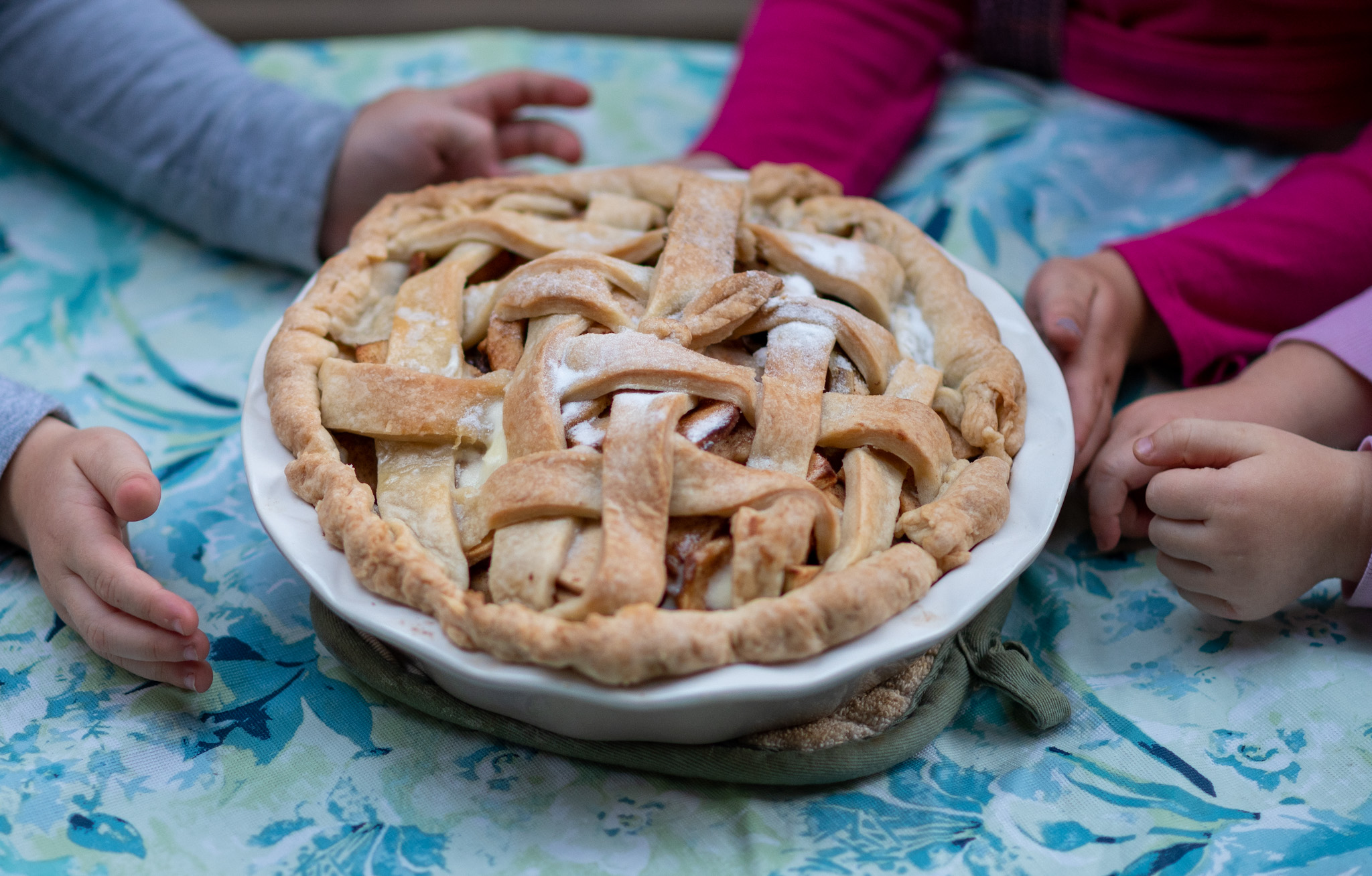
Raisin-Apple Pie
My mother-in-law always told me to pile a pie crust high with apples. They break down during baking, so you want enough in there for a substantial pie. The addition of raisins and clove in this recipe add a sweet, wintry burst of flavor.
Makes 1 (9-inch) double-crusted pie
For the Crust
- 2 1/2 cups all-purpose flour
- 1 tablespoon granulated sugar
- 1/2 teaspoon salt
- 1/2 pound (two sticks) cold butter, diced into small cubes
- 1/2 cup ice-cold water
For the Filling
- 8 to 9 large apples (Granny Smith, Jonagold, and Golden Delicious all work well), cored, peeled, and sliced
- 1/2 cup brown sugar
- 2 tablespoons all-purpose flour
- 1 teaspoon cinnamon
- 1/2 teaspoon nutmeg
- 1/2 teaspoon cloves
- Juice of 1 lemon
- 1 cup raisins
- 4 tablespoons cold butter, thinly sliced
In a food processor or stand mixer fitted with the paddle attachment, combine the flour, sugar, and salt. Add the butter and pulse or mix until the mixture resembles fine crumbs. Slowly add the cold water and mix until the dough sticks together. Form into two equal-sized discs and refrigerate at least 30 minutes and up to 2 days.
Preheat the oven to 400 degrees F.
In a large mixing bowl, combine the filling ingredients. Mix together and let sit while you roll out the dough.
On a lightly floured surface, roll out each disc of dough into a 13-inch round. Transfer the first round of dough into a 9-inch pie dish, pressing the crust around the edge of the dish.
Pour the filling ingredients into the pie dish and distribute the sliced butter on top.
Drape the second round of dough over the pie and crimp the edges, folding and pressing the dough together. (You can also cut this round into strips to make a lattice crust.) Cut a few steam vents into the top crust.
Bake uncovered at 400 degrees F for 15 minutes. Then, cover the pie with aluminum foil, reduce the oven temperature to 350 degrees F, and bake for 1 hour, until the crust is golden and the filling is bubbling.
Serve with heavy cream or ice cream.
Collected by Cookingtom
Original Article

I’m Brian Danny Max, a chef and a writer at cookingtom.com. I’m here to talk about food and cooking, and to share some of my favorite recipes with you all! I’ve been interested in food and cooking since I was a child. My parents are both great cooks, and they taught me a lot about the kitchen. I’ve been cooking professionally for about 10 years now, and I’ve loved every minute of it! I specialize in healthy, flavorful recipes that are easy to make at home. I believe that anyone can cook a delicious meal, no matter their skill level. I’m here to help you learn how to cook, and to show you that it’s not as difficult as you might think! I hope you’ll check out my blog and my recipes, and I look forward to hearing from you!

